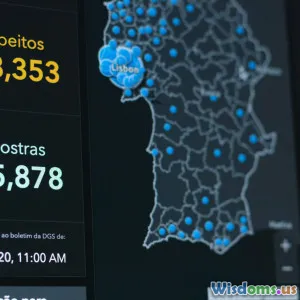
Modern Techniques in Crime Investigation
5 min read Explore innovative methods revolutionizing crime investigation. (0 Reviews)
Modern Techniques in Crime Investigation
In recent years, the field of crime investigation has seen significant advancements driven by technological innovations and a deeper understanding of human behavior. This article explores some of the most modern techniques employed by law enforcement agencies around the world, highlighting how they enhance the efficiency of investigations and improve outcomes for justice.
1. Forensic Science Advancements
Forensic science is at the forefront of modern crime investigation techniques. With the introduction of more sophisticated tools and methods, forensic experts can analyze evidence with unprecedented accuracy. Some notable advancements include:
- DNA Analysis: The ability to analyze DNA has revolutionized crime scene investigations. Techniques such as next-generation sequencing allow for the identification of minute quantities of DNA, making it possible to link suspects to crime scenes even when the evidence is scarce.
- Digital Forensics: As technology evolves, so does the need for digital forensics. Investigators can now recover data from smartphones, computers, and cloud services, providing critical evidence that may have otherwise gone unnoticed. Tools like EnCase and FTK enable thorough analysis of digital footprints.
2. Predictive Policing
Predictive policing utilizes data analysis to forecast where crimes are likely to occur. By employing algorithms that analyze historical crime data, demographic information, and even weather patterns, law enforcement agencies can allocate resources more effectively. Some key aspects include:
- Crime Mapping: Software applications like PredPol help visualize crime trends and hotspots, allowing police departments to deploy officers strategically.
- Risk Terrain Modeling: This technique assesses the environmental factors that contribute to crime, aiding in the development of targeted interventions.
3. Behavioral Analysis and Profiling
Modern crime investigations increasingly rely on behavioral analysis to understand the motivations and characteristics of offenders. This approach involves:
- Offender Profiling: By studying patterns in criminal behavior, investigators can create profiles of suspects, which guide their investigations. This method is especially useful in serial crime cases.
- Victimology: Understanding the victim's background and circumstances can provide critical insights into the perpetrator's motives, enhancing investigative strategies.
4. Use of Artificial Intelligence (AI)
AI is making waves in crime investigation, providing tools that can analyze vast amounts of data quickly and accurately. Some applications include:
- Facial Recognition Technology: AI algorithms can match images from surveillance footage with databases of known offenders, speeding up the identification process.
- Natural Language Processing: AI can analyze social media, emails, and other text data to find patterns or threats, assisting in the prevention of crimes before they occur.
5. Community Engagement and Crowdsourcing
Modern crime investigation emphasizes collaboration between law enforcement and the community. Engaging the public can significantly enhance information gathering and crime-solving efforts. Initiatives include:
- Crime Stoppers: These programs encourage citizens to report crimes anonymously, often leading to crucial tips that help solve cases.
- Social Media: Platforms like Twitter and Facebook allow police departments to disseminate information quickly, gather leads, and foster community trust.
Conclusion
Modern techniques in crime investigation are not only reshaping how law enforcement operates but also improving the chances of delivering justice in an increasingly complex world. By embracing technology and fostering community partnerships, investigators can navigate the challenges of contemporary crime with greater effectiveness. As these methods continue to evolve, they hold the promise of making our communities safer and more just for all.
Rate the Post
User Reviews
Popular Posts





















